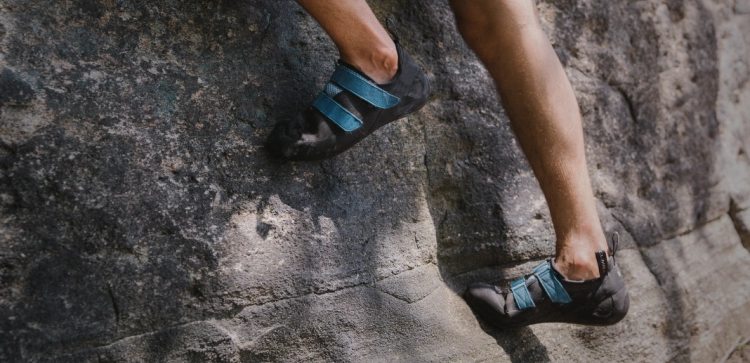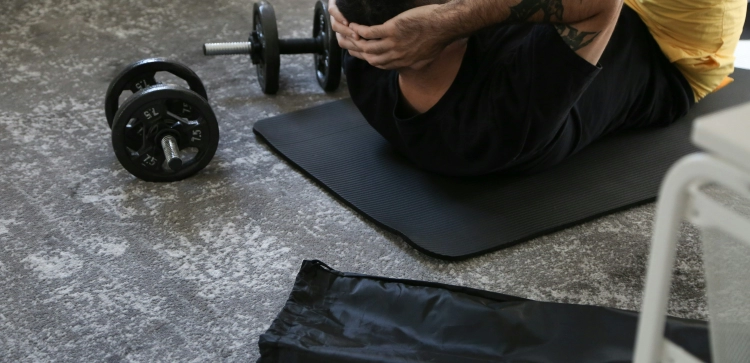Climbing Shoes Vs. Regular Shoes: Unleashing Your Climbing Potential

Climbers know how important feet work is while climbing, and how the right climbing shoes can help enhance their performance. This is because their feet are an inseparable part of climbing, and the right footwear can make all the difference.
Climbing shoes are specifically designed for climbing. They offer unique advantages that can enhance your climbing and overall experience, advantages that regular shoes or sneakers do not offer.
Let's take a closer look at why climbing shoes are essentail for climbers, how they differ from regular shoes and sneakers, and what benefits they have for climbers that regular shoes do not.
Advantages of Climbing Shoes
Climbing shoes are designed with the specific intention of them being used to climb rocks and in climbing gyms, this design includes optimal performance and support. Here are some key advantages of using climbing shoes:
-
Superior Grip: Climbing shoes feature specialized rubber soles that provide excellent grip on rock surfaces, allowing climbers to maintain traction and grip onto small holds and edges.
-
Precise Fit: Climbing shoes are snug-fitting with a close-to-the-toe design, which allows for precise foot placement and improved sensitivity, enabling climbers to feel the rock and make precise movements.
-
Enhanced Edging: Climbing shoes typically have a stiffer sole that allows for better edging, which is essential for maintaining stability and balance while climbing on narrow edges or small footholds.
-
Increased Flexibility: Climbing shoes are designed to provide maximum flexibility, allowing for natural foot movement and better adaptation to uneven terrain, cracks, and crevices.
-
Durable Construction: Climbing shoes are made with durable materials that can withstand the wear and tear of climbing, making them a reliable choice for long-term use.
Why Use Climbing Shoes
If the advantages listed above were not enough to convince you that climbing shoes are superior over regular shoes for climbing, here are a few more reasons why climbing shoes are a must-have for climbers:
-
Safety: Climbing shoes provide better traction and grip on rock surfaces and climbing holds, reducing the risk of slips and falls, and ensuring a safer climbing experience.
-
Performance: Climbing shoes are specifically designed to optimize climbing performance by providing enhanced grip, sensitivity, and flexibility, allowing climbers to push their limits and achieve their best performance.
-
Comfort: Although climbing shoes may feel snug and tight, they are designed to provide comfort during climbing movements and help reduce foot fatigue.
-
Versatility: The versatility of climbing shoes for different types of climbing is unmatched as they are designed specifically for climbing, meaning, climbing shoes can be used for all types of climbing.
Climbing Shoes vs. Regular Shoes
One common question new climbers have is if they should wear climbing shoes, and what the difference is between climbing shoes and regular shoes. Here are some of the key differences:
-
Grip: Climbing shoes are designed with specialized rubber soles that provide excellent traction on rock surfaces and climbing holds, allowing for better grip and precise foot placement. This is especially crucial for toe hooking and heel hooking, advanced climbing techniques that require hooking the toes or heels onto holds for added support and stability. Regular shoes may not offer the same level of grip and precision, increasing the rate at which your feet slip.
-
Fit: Climbing shoes are designed to have a snug fit, allowing for precise foot placement, while regular shoes may have a looser fit, which can limit sensitivity and precision on the rock.
-
Sole Stiffness: Climbing shoes usually have a stiffer sole, which allows for better edging, while regular shoes may have a softer sole that lacks the required rigidity for optimal climbing performance, such as standing on small foot holds.
-
Flexibility: Climbing shoes are designed to be highly flexible, allowing for natural foot movement, while regular shoes may not provide the same level of flexibility required for climbing.
-
Durability: Climbing shoes are constructed with durable materials to withstand the wear and tear of climbing, while regular shoes may not be as durable in climbing-specific conditions, which could just cause the shoes to get ruined rather quickly.
-
Climbing-specific Features: Climbing shoes often come with additional features such as a downturned shape, toe rand, and lace-up or Velcro closures, which are specifically designed to enhance climbing performance, while sneakers do not have these specialized features.
To Sum It Up
If you have been climbing in casual shoes or sneakers, investing in a pair of climbing shoes can greatly increase your climbing potential. Climbing shoes, as opposed to regular shoes and sneakers, are made specifically for climbing and offer features that regular shoes do not, such as improved precision, edging, and grip, which can greatly increase your climbing performance and safety.














